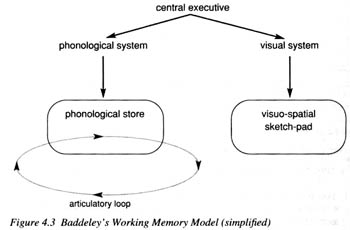Managing Irrelevant Cognitive Load
 Last month I blogged about the new version of Ruth Clark’s book on Building Expertise. She reviews what we know about the cognitive science of learning to provide an evidence-based approach to instructional design. I believe her lessons are of general value to cognitive designers dealing with issues of learnability.
Last month I blogged about the new version of Ruth Clark’s book on Building Expertise. She reviews what we know about the cognitive science of learning to provide an evidence-based approach to instructional design. I believe her lessons are of general value to cognitive designers dealing with issues of learnability.
For example, one of her eight instructional design principles is The Cognitive Load Management Principle. The idea is that conscious mental processes that involve the central executive such as learning and self-regulation are ultimately constrained by the limitations of working or short-term memory. Working memory has separate stores for visual and auditory content and can hold approximately seven pieces of information at any one time.
The task demands of learning require the manipulation of information in working memory and therefore place a certain cognitive load on the learner. Too much information, or information of the wrong type creates irrelevant cognitive load and can interfere with the process of learning. She surveys the factors that shape load including, complexity of content, level of experience the learner has in the domain, presentation rate and control and instructional modes and methods and goes on to define a series of guidelines for managing cognitive load. Guidelines include methods to:
1. Bypass working memory by using drills to move content into long-term memory or use external memory devices such as job aids or embedded reference manuals so it is easy to look up information real-time during the learning process.
2. Minimize content using concise writing, annotating visuals with audio only (not text) and eliminating unnecessary stories, visuals and animations.
3. Impose content gradually by providing bit sized pieces of content, introducing concepts before procedures and allowing the learner to control the pace at which material is presented.
4. Minimize unproductive mental work by using visuals to represent spatial content and providing worked examples.
The overall goal or principle of cognitive load management is to “manage cognitive load in the design of instructional materials and activities so that limited cognitive resources can be devoted to learning processes.”
Surely a worthwhile goal when considering the usability and learnability in the design of any artifact.

February 24th, 2014 at 5:51 pm
Garcinia Cambogia Extract…
Cognitive Design » Blog Archive » Managing Irrelevant Cognitive Load…